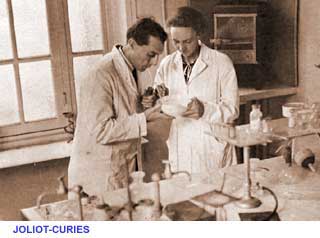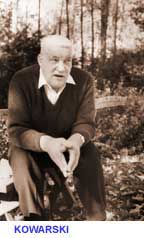Hahn and Strassmann's paper arrived in Paris at the laboratory of Frederic Joliot. With his wife, Irene Curie, Joliot had made important nuclear discoveries. Lew Kowarski was in the laboratory, and remembers Joliot's reaction to the paper...
KOWARSKI: It was on the 16th of January, and Naturwissenschaften, the famous number, arrived in the morning mail. Joliot probably had his first glimpse of the Hahn and Strassmann article in my presence, and it was, of course, a bombshell.


Don't forget that Kowarski is describing Joliot's reaction to the Hahn-Strassmann experiments; the Paris group had not yet heard how Frisch and Meitner had explained the strange results, in terms of uranium fission. But Joliot followed an almost identical path, as Kowarski explains...
KOWARSKI: Immediately, everything was understood. For the next few days, nobody talked of anything else. Joliot immediately had the ideas about splitting of the uranium atom in two. Then he designed his famous experiment, which is, I think, one of the most elegant experiments I know of in the history of science, and which he performed before my eyes. It was that simple, took a few days. So here it was. Fission was proved as physical reality. We still didn't know that Frisch had already observed it two weeks before.
Within weeks, the whole world knew about fission. Speculation about the vast stores of energy in the nucleus prompted a New York Times editorial in February 1939...
NEWS ARTICLE: "The possibility of harnessing the energy of the atom crops up again. Rutherford...and other distinguished physicists did their best in late years to discourage speculations on the subject, because bombardment was so inefficient that more energy was expended on the atom than ever came out of it. Now the picture is changed... Romancers have a legitimate excuse for returning to Wellsian utopias where whole cities are illuminated by energy in a little matter." *
*© 1939 by the New York Times Company.
